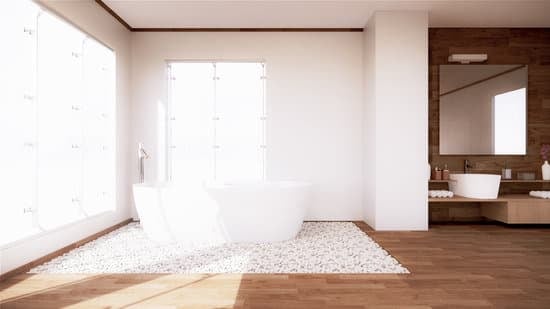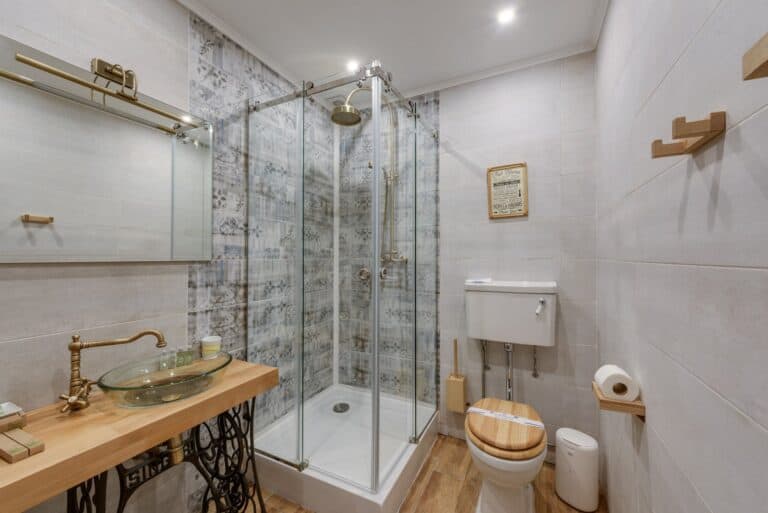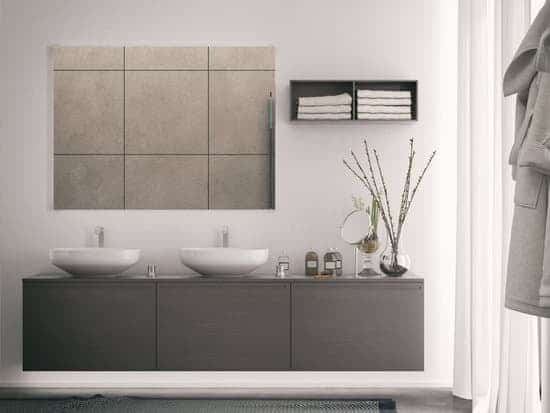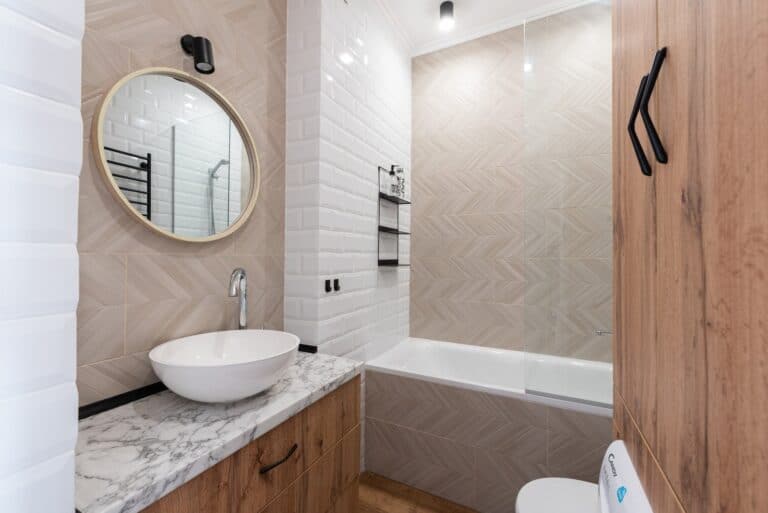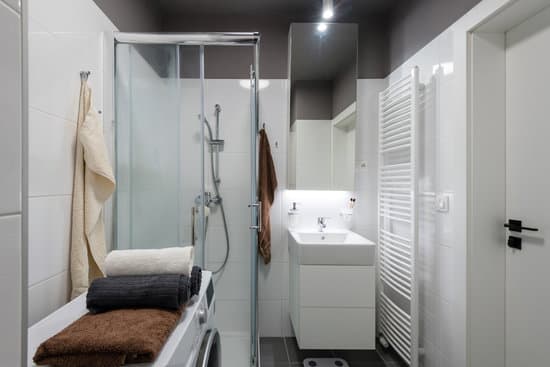Are you tired of looking at outdated or damaged bathroom tile? If so, covering it with wainscoting might be the perfect solution for you. Not only does wainscoting add a touch of elegance to any bathroom, but it also provides protection for your walls against moisture and stains. In this article, we will guide you through the process of assessing your tile, choosing the right wainscoting material, preparing the surface, installing the panels, and adding those finishing touches. Get ready to transform your bathroom into a safe and stylish oasis!
Assessing Your Bathroom Tile
You’ll want to start by assessing your bathroom tile. Evaluating the condition of your tile is important to ensure a safe and successful installation of wainscoting. Begin by carefully inspecting the tiles for any cracks, loose pieces, or signs of water damage. If you notice any issues, it’s crucial to address them before proceeding further. Next, measure the dimensions of your tile accurately. This step will help you determine the amount of wainscoting material needed and ensure a proper fit. Measure both the length and width of each individual tile as well as the overall area that needs covering. By taking these steps to evaluate your tile condition and measure its dimensions correctly, you’ll be well-prepared for the next phase of installing wainscoting in your bathroom.
Choosing the Right Wainscoting Material
When selecting the ideal material for your wainscoting, consider its durability and aesthetic appeal. You want something that will withstand the moisture and humidity present in a bathroom while still looking great. Wainscoting provides several benefits in bathrooms, including protecting your walls from water damage and adding a touch of elegance to the space. There are different types of wainscoting materials available to choose from, each with their own unique qualities. One option is beadboard, which gives a classic and timeless look with its vertical grooves. Another choice is PVC wainscoting, which is resistant to moisture and easy to clean. For a more luxurious feel, you might opt for wood paneling or even tile wainscoting. Consider your personal style preferences and the level of maintenance you’re willing to undertake when making your selection.
Preparing the Tile Surface
Before starting the installation process, it’s important to properly prepare the surface for tiling. This will ensure that your wainscoting adheres securely and looks its best. Here are a few key steps to follow when preparing your bathroom tile surface:
- Begin by removing any existing grout between the tiles using a grout removal tool. Be careful not to damage the surrounding tiles in the process.
- Next, use a putty knife or scraper to gently pry off any loose or damaged tiles. Safety should always be a priority, so wear protective gloves and eyewear during this step.
- Once all loose tiles have been removed, clean the surface thoroughly with a mild detergent and warm water. This will remove any dirt, grease, or residue that could interfere with proper adhesion.
- Finally, allow the surface to dry completely before proceeding with your wainscoting installation.
By following these steps, you’ll create a smooth and secure base for your new wainscoting while ensuring safety throughout the tile removal process.
Installing the Wainscoting Panels
To install the wainscoting panels, start by applying adhesive to the back of each panel. Make sure to choose a strong adhesive that is suitable for bathroom conditions. Carefully position the first panel at the bottom of the tile surface and press it firmly against the wall. Use a level to ensure that it is straight. Repeat this process for each panel, aligning them closely together. For added security, you can use finishing nails or screws to secure the panels in place. Remember to wear safety goggles and gloves while handling tools and materials.
When it comes to installing wainscoting, there are various techniques you can try depending on your preference and style. Some popular designs include raised panel wainscoting, beadboard wainscoting, or even a combination of both. Consider your bathroom’s overall aesthetic when choosing a design that complements it best. With these installation techniques and design ideas in mind, you’ll be able to transform your bathroom tiles with beautiful wainscoting panels effortlessly.
Finishing Touches and Maintenance Tips
For a polished look, remember to add any necessary trim or molding around the edges of your panels and fill in any gaps with caulk. This will ensure that your wainscoting installation looks seamless and professional. Here are some important finishing touches and maintenance tips to keep in mind:
- Benefits of using wainscoting in bathroom design: Not only does wainscoting add a touch of elegance and sophistication to your bathroom, but it also provides protection for the walls against moisture and water damage.
- Creative ways to incorporate wainscoting in bathroom decor: Consider using different materials like beadboard or shiplap for a unique look. You can also experiment with various paint colors or wallpaper patterns on the upper portion of the wall above the wainscoting.
- Regular cleaning and maintenance: Wipe down the wainscoting regularly with a damp cloth to remove any dirt or grime. Avoid using harsh chemicals that may damage the finish.
- Periodic recaulking: Over time, caulk may shrink or crack. It’s important to inspect and recaulk any gaps between panels periodically to maintain the integrity of your wainscoting installation.
By following these finishing touches and maintenance tips, you can ensure that your bathroom tile covered with wainscoting stays beautiful and functional for years to come while adding style and charm to your space.
Conclusion
So there you have it, a simple and practical guide on how to cover your bathroom tile with wainscoting. By following these steps, you can transform the look of your bathroom and add a touch of elegance and charm. Remember to assess your tile, choose the right material, prepare the surface, install the panels correctly, and don’t forget those finishing touches. With proper maintenance, your new wainscoting will last for years to come. Enjoy your newly upgraded bathroom!

